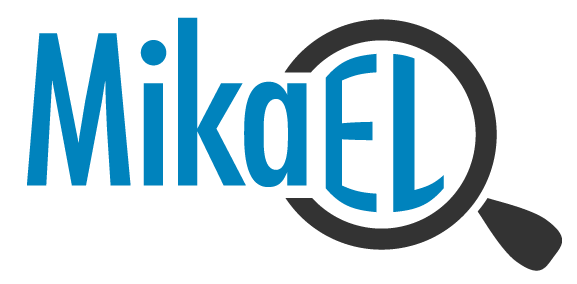Creative characteristics of specialised translation
DOI:
https://doi.org/10.61200/mikael.147628Keywords:
specialised translation, professional creativity, translation industryAbstract
The creative aspects of specialised translation are explored here through the perceptions of translation professionals employed in various roles in the translation industry. Most of the interviewees supported the view that translation can be described as a creative task in accordance with the current understanding of professional creativity. Interviewees identified creative task elements related to changed content, linguistic forms and problem-solving. Translational creativity was considered to be limited by several factors such as the technological tools being used, although the use of tools was also seen as requiring creativity. Different text genres were considered to require different kinds of creativity, and individual translators were also seen to possess varying creative abilities. It was therefore suggested that in translation project management, selecting translation professionals who have a suitable set of creative abilities is a critical step. It seems that a narrow definition of translation may lead to a critical view of whether translation is inherently creative work, while recognising the diversity of translational tasks facilitates a more positive view.
References
Aranda, Lucía V. 2009. Forms of Creativity in Translation. Cadernos de tradução 23, 23–37. https://doi.org/10.5007/2175-7968.2009v1n23p23
Bantinaki, Katerina 2020. The Literary Translator as Author: A Philosophical Assessment of the Idea. Translation Studies 13:3, 306–317. https://doi.org/10.1080/14781700.2019.1668841
Bayer-Hohenwarter, Gerrit 2011. “Creative Shifts” as a Means of Measuring and Promoting Translational Creativity. Meta 56:3, 663–692. https://doi.org/10.7202/1008339ar
Bayer-Hohenwarter, Gerrit & Paul Kußmaul 2021. Translation, Creativity and Cognition. In: Fábio Alves & Arnt Lykke Jakobsen (eds) The Routledge Handbook of Translation and Cognition. Abingdon: Routledge, 310–325.
Cropley, David & Arthur Cropley 2010. Functional Creativity: ‘Products’ and the Creation of Effective Novelty. In: James C. Kaufman & Robert J. Sternberg (eds) The Cambridge Handbook of Creativity, 301–317.
Ehrensberger-Dow, Maureen 2017. An Ergonomic Perspective of Translation. In: John W. Schwieter & Aline Ferreira (eds) The Handbook of Translation and Cognition. Newark: Wiley, 332–349.
Fontanet, Mathilde 2005. Temps de créativité en traduction. Meta 50:2, 432–447. https://doi.org/10.7202/010992ar
Guilford, J. P. 1950. Creativity. The American Psychologist 5:9, 444–454.
Katan, David 2021. Transcreation. In: Yves Gambier & Luc van Doorslaer (eds) Handbook of Translation Studies 5. Amsterdam: John Benjamins, 142–145.
Kaufman, James C. & Ronald A. Beghetto 2009. Beyond Big and Little: The Four C Model of Creativity. Review of General Psychology 13:1, 1–12.
Kaufman, James C. & Vlad P. Glăveanu 2019. A Review of Creativity Theories. In: James C. Kaufman & Robert J. Sternberg (eds) The Cambridge Handbook of Creativity. Cambridge: Cambridge University Press, 27–43.
Kaufman, James C. & Robert J. Sternberg (eds) 2019. The Cambridge Handbook of Creativity. Cambridge: Cambridge University Press.
Korhonen, Annamari 2024. Translation Revision as Part of Cognitive Translatorial Collaboration: Creativity under Pressure. Tampere University Dissertations 974. Tampere: Tampere University.
Korhonen, Annamari & Hirvonen, Maija 2021. Joint Creative Process in Translation: Socially Distributed Cognition in Two Production Contexts. Cognitive Linguistic Studies 8:2, 251–276. https://doi.org/10.1075/cogls.00078.kor
Kußmaul, Paul 2000. Kreatives Übersetzen. Tübingen: Stauffenburg.
Kußmaul, Paul 2007. Verstehen und Übersetzen. Ein Lehr- und Arbeitsbuch. Tübingen: Gunter Narr.
Leech, Geoffrey N. & Michael H. Short 1981. Style in Fiction. A Linguistic Introduction to English Fictional Prose. London and New York: Longman.
Levý, Jiří 1967. Translation as a Decision Process. In: To Honor Roman Jakobson II: Essays on the Occasion of His Seventieth Birthday 11 October 1966. The Hague: Mouton de Gruyter, 1171–1182.
Malmkjær, Kirsten 2020. Translation and Creativity. New York: Routledge.
Perteghella, Manuela & Eugenia Loffredo (eds) 2006. Translation and Creativity: Perspectives on Creative Writing and Translation Studies. London: Continuum.
Preiser, Siegfried 1976. Kreativitätsforschung. Darmstadt: Wissenschaftliche Buchgesellschaft.
Pym, Anthony 2003. Redefining Translation Competence in an Electronic Age: In Defence of a Minimalist Approach. Meta 48:8, 481–497. https://doi.org/10.7202/008533ar
Reiß, Katharina & Hans J. Vermeer 1984. Grundlegung Einer Allgemeinen Translationstheorie. Tübingen: Niemeyer.
Rogers, Margaret 2015. Specialised Translation: Shedding the ‘Non-literary’ Tag. London: Palgrave Macmillan.
Rojo, Ana 2017. The Role of Creativity. In: John W. Schwieter & Aline Ferreira (eds) The Handbook of Translation and Cognition. Newark: Wiley, 350–368.
Scarpa, Federica 2020. Research and Professional Practice in Specialised Translation. London: Palgrave Macmillan.
Unsworth, Kerrie 2001. Unpacking Creativity. The Academy of Management Review 26:2, 289–297. https://doi.org/10.5465/amr.2001.4378025
Varantola, Krista 1986. Special Language and General Language: Linguistic and Didactic Aspects. UNESCO Alsed-LSP Newsletter, 9/2 (23), 10–20.
Wilss, Wolfram 1988. Kognition und Übersetzen. Zu Theorie und Praxis der menschlichen und der maschinellen Übersetzung. Tübingen: Max Niemeyer.
Wilss, Wolfram 1999. Translation and Interpreting in the 20th Century: Focus on German. Amsterdam/Philadelphia: John Benjamins.
Downloads
Published
Issue
Section
License
Copyright (c) 2025 Annamari Korhonen

This work is licensed under a Creative Commons Attribution-NonCommercial 4.0 International License.

